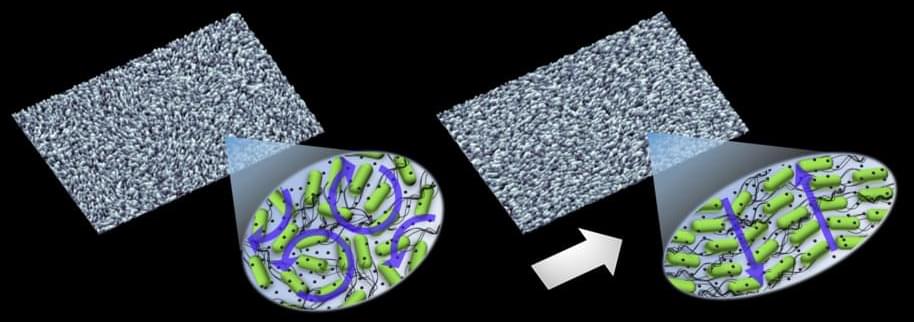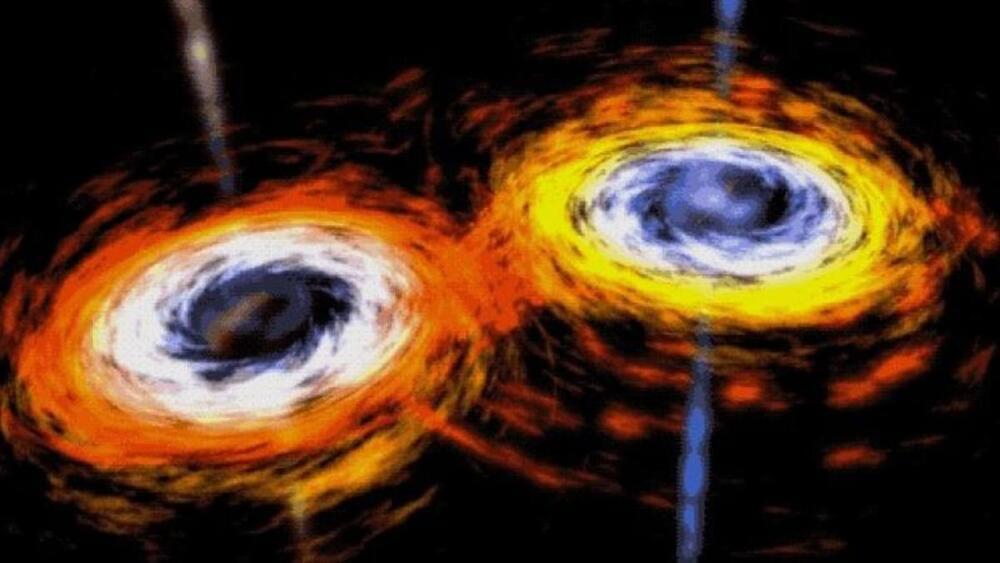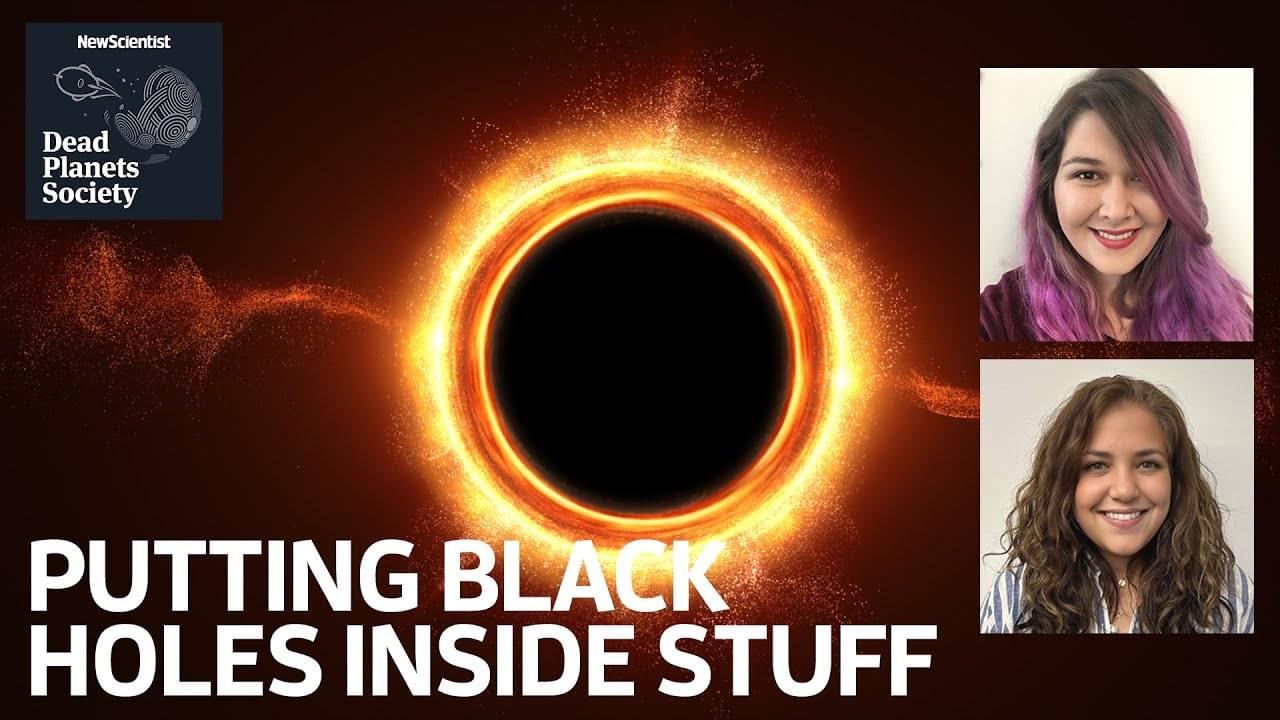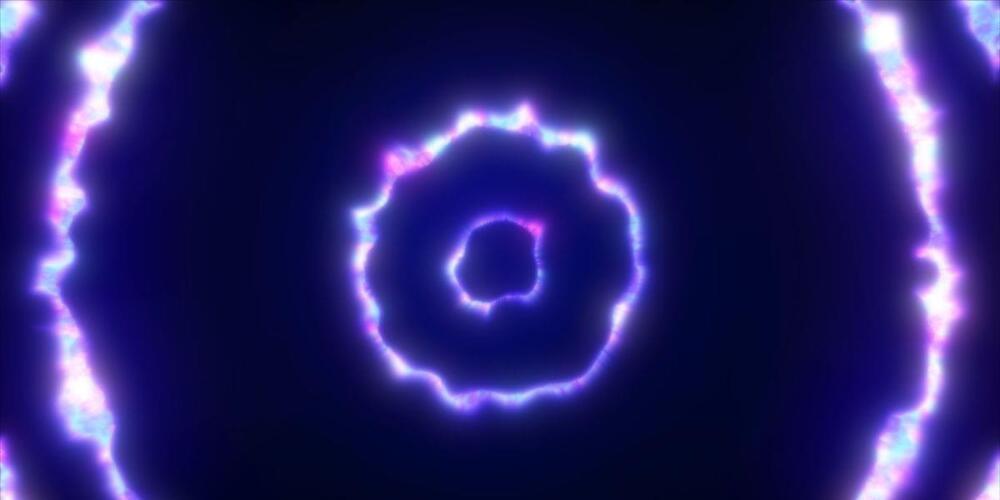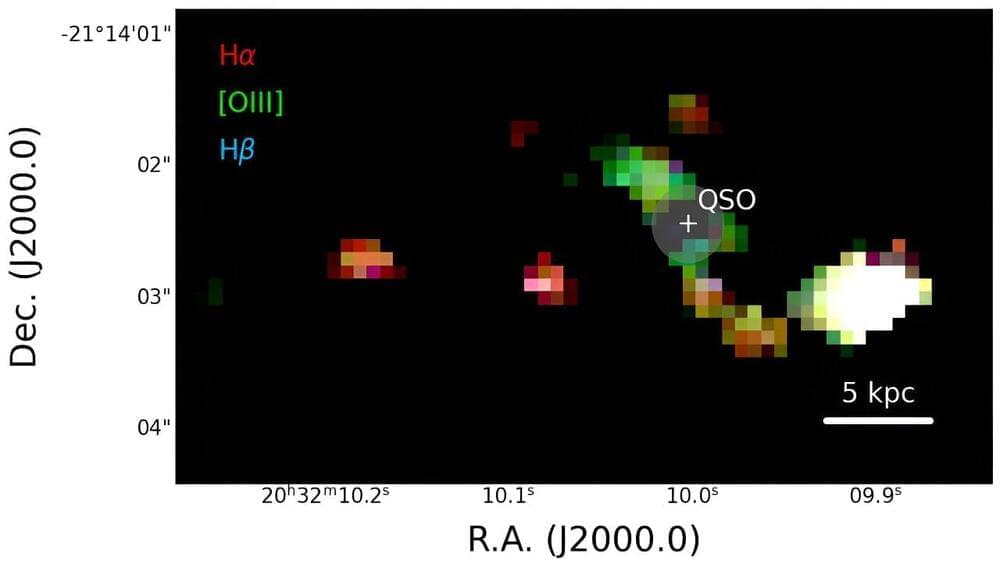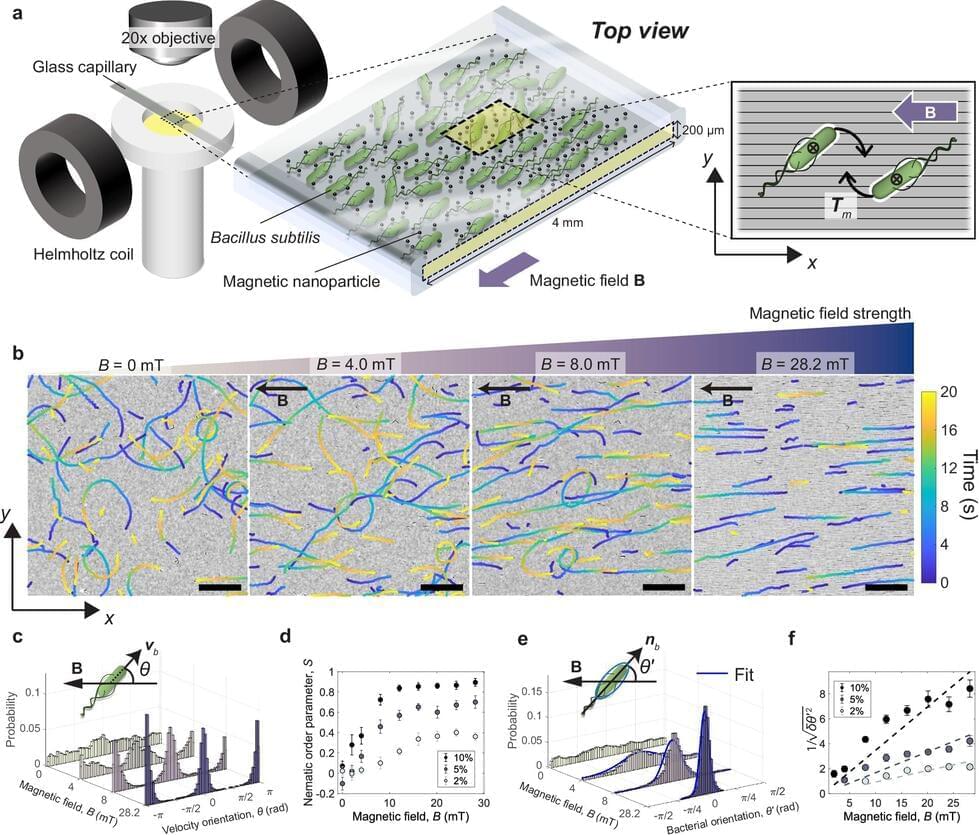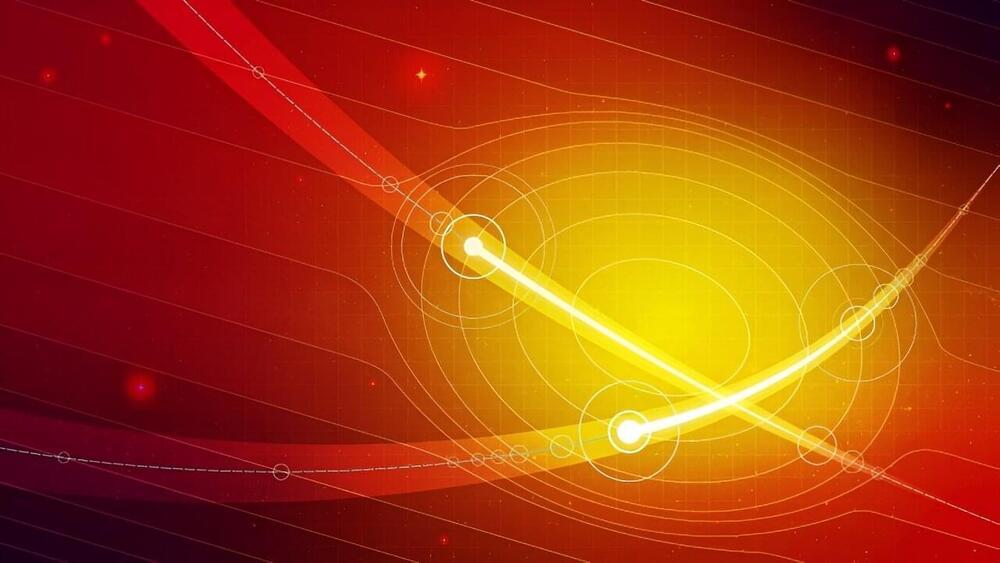Jul 10, 2024
Getting bacteria into line
Posted by Shubham Ghosh Roy in categories: energy, nanotechnology, physics
Researchers at Finland’s Aalto University have found a way to use magnets to line up bacteria as they swim. The approach offers more than just a way to nudge bacteria into order – it also provides a useful tool for a wide range of research, such as work on complex materials, phase transitions and condensed matter physics.
The findings have been reported in Communications Physics (“Magnetically controlled bacterial turbulence”).
Bacterial cells generally aren’t magnetic, so the magnets don’t directly interact with the bacteria. Instead, the bacteria are mixed into a liquid with millions of magnetic nanoparticles. This means the rod-shaped bacteria are effectively non-magnetic voids inside the magnetic fluid. When the magnets are switched on, creating a magnetic field, the bacteria are nudged to line up with the magnetic field because any other arrangement takes more energy – it’s harder to keep the rod-shaped holes at an angle to the magnetic field.
